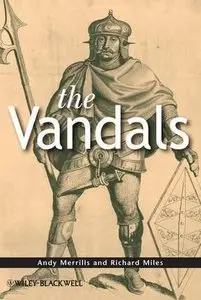| Su | Mo | Tu | We | Th | Fr | Sa |
|---|---|---|---|---|---|---|
| 23 | 24 | 25 | 26 | 27 | 28 | 1 |
| 2 | 3 | 4 | 5 | 6 | 7 | 8 |
| 9 | 10 | 11 | 12 | 13 | 14 | 15 |
| 16 | 17 | 18 | 19 | 20 | 21 | 22 |
| 23 | 24 | 25 | 26 | 27 | 28 | 29 |
| 30 | 31 | 1 | 2 | 3 | 4 | 5 |
Attention❗ To save your time, in order to download anything on this site, you must be registered 👉 HERE. If you do not have a registration yet, it is better to do it right away. ✌

SpicyMags.xyz

SpicyMags.xyz
The Locust Effect: Why the End of Poverty Requires the End of Violence
Date: 12 Mar 2014 23:03:39
The Locust Effect: Why the End of Poverty Requires the End of Violence
Language: English | EPUB / MOBI | ISBN-10: 0199937877 | ASIN: B00GHJNSOI | 2014 | 368 pages | 1 MB / 1 MB
Language: English | EPUB / MOBI | ISBN-10: 0199937877 | ASIN: B00GHJNSOI | 2014 | 368 pages | 1 MB / 1 MB
While the world has made encouraging strides in the fight against global poverty, there is a hidden crisis silently undermining our best efforts to help the poor. It is a plague of everyday violence.
Photoshop for Designers: Layer Effects
Date: 12 Mar 2014 22:44:45
Photoshop for Designers: Layer Effects with Nigel French
MOV + Exercise Files | Duration: 3h 3min | 960x540 | Video: 30 fps 502 kbps | Audio: AAC 48KHz 159 kbps 2 stereo | 1.19 GB
Genre: eLearning | Level: Intermediate | Language: English
MOV + Exercise Files | Duration: 3h 3min | 960x540 | Video: 30 fps 502 kbps | Audio: AAC 48KHz 159 kbps 2 stereo | 1.19 GB
Genre: eLearning | Level: Intermediate | Language: English
For the first installment of Photoshop for Designers, Nigel French shows how to create editable, non-destructive effects such as shadows, glows, and bevels with layer effects in Photoshop. The course covers the use of layer effects like Drop Shadow, Inner Shadow, Bevel and Emboss, and Gradient Overlay, as well as how to combine effects with blending modes, transparency, and textures. With these techniques, designers can finesse type and graphics, control light, warp text, and extrude shapes, creating drama and adding depth to their compositions.
Tacitus - The Agricola and the Germania
Date: 12 Mar 2014 22:42:44
Tacitus - The Agricola and the Germania
Language: English | EPUB / MOBI | ISBN-10: 014045540X | 2010 | 224 pages | 2 MB / 1 MB
Language: English | EPUB / MOBI | ISBN-10: 014045540X | 2010 | 224 pages | 2 MB / 1 MB
Undeniably one of Rome's most important historians, Tacitus was also one of its most gifted. The Agricola is both a portrait of Julius Agricola-the most famous governor of Roman Britain and Tacitus's respected father-in-law-and the first known detailed portrayal of the British Isles. In the Germania, Tacitus focuses on the warlike German tribes beyond the Rhine, often comparing the behavior of "barbarian" peoples favorably with the decadence and corruption of Imperial Rome.
Flat Water Tuesday: A Novel
Date: 12 Mar 2014 22:15:44
Flat Water Tuesday: A Novel
Audio CDs in MP3 / English: MP3, 64 kb/s (1 ch) | Duration: 10:53:28 | 2013 | ISBN-10: 1427231796 | 299 MB
Genre: Novel
Audio CDs in MP3 / English: MP3, 64 kb/s (1 ch) | Duration: 10:53:28 | 2013 | ISBN-10: 1427231796 | 299 MB
Genre: Novel
Rob Carrey, the son of a working-class cabinet maker, arrives at the Fenton School with a scholarship to row and a chip on his shoulder. Generations of austere Fenton men have led the rowing team, known as the God Four, to countless victories—but none are as important or renowned as the annual Tuesday-afternoon race against their rival, Warwick.
The Lions of Iwo Jima: The Story of Combat Team 28 and the Bloodiest Battle in Marine Corps History
Date: 12 Mar 2014 22:03:00
The Lions of Iwo Jima: The Story of Combat Team 28 and the Bloodiest Battle in Marine Corps History
Audio CDs in MP3 / English: MP3, 64 kb/s (1 ch) | Duration: 09:09:02 | 2008 | ISBN-10: 1400107385 | 251 MB
Genre: History
Audio CDs in MP3 / English: MP3, 64 kb/s (1 ch) | Duration: 09:09:02 | 2008 | ISBN-10: 1400107385 | 251 MB
Genre: History
It was the bloodiest battle in Marine Corps history, claiming a third of all marines killed in World War II. The relentless fighting on Iwo Jima lasted for thirty-six days, but most of us only know the iconic photo of five soldiers raising the American flag on Mount Surabachi. For Fred Haynes, a young captain in Combat Team 28, Surabachi was one marker in a ferocious blood-letting against an enemy of 22,000 warriors who were dug into caves and tunnels.
Genius: The Life and Science of Richard Feynman [repost]
Date: 12 Mar 2014 21:53:15
Genius: The Life and Science of Richard Feynman
Audio CDs in MP3 / English: MP3, 64 kb/s (1 ch) | Duration: 20:06:13 | 2011 | ISBN-10: N/A | ASIN: B004LQ6MBA | 552 MB
Genre: Biographies
Audio CDs in MP3 / English: MP3, 64 kb/s (1 ch) | Duration: 20:06:13 | 2011 | ISBN-10: N/A | ASIN: B004LQ6MBA | 552 MB
Genre: Biographies
From the author of the national best seller Chaos comes an outstanding biography of one of the most dazzling and flamboyant scientists of the 20th century that "not only paints a highly attractive portrait of Feynman but also . . . makes for a stimulating adventure in the annals of science."
Andrew Merrills and Richard Miles, "The Vandals" (Repost)
Date: 12 Mar 2014 21:51:48
Andrew Merrills and Richard Miles, "The Vandals"
Publisher: Wiley-Blackwell | ISBN: 1405160683 | edition 2010 | PDF | 366 pages | 2,53 mb
Publisher: Wiley-Blackwell | ISBN: 1405160683 | edition 2010 | PDF | 366 pages | 2,53 mb
The Vandals is the first book available in the English Language dedicated to exploring the sudden rise and dramatic fall of this complex North African Kingdom.
The Slangman Guide to Biz Speak 2
Date: 12 Mar 2014 21:37:10
The Slangman Guide to Biz Speak 2
Audio CDs: English: MP3, 320 Kbps (2 channels) | Duration: 02:14:35 | 2001 | ISBN-10: 1891888374
Overal size: 308 MB | Genre: Learning English | Level: Business
Audio CDs: English: MP3, 320 Kbps (2 channels) | Duration: 02:14:35 | 2001 | ISBN-10: 1891888374
Overal size: 308 MB | Genre: Learning English | Level: Business
The world is getting smaller every day: people are traveling more, making friends in other countries, and working with people who speak different languages in the workplace. We want to remove the frustration from communication and make it fun. We have a lot to learn from each other, but we can't even start unless we can communicate effectively. Our products allow people to learn the real language, the language not often taught in schools. Our books and audio products make it fun and easy to learn. We want to give you the confidence to speak English anywhere!
The Food Network South Beach Wine & Food Festival Cookbook: Recipes and Behind-the-Scenes Stories... (repost)
Date: 12 Mar 2014 21:30:06
The Food Network South Beach Wine & Food Festival Cookbook: Recipes and Behind-the-Scenes Stories from America's Hottest Chefs by Lee Schrager
English | ISBN: 0307460169 | 2010 | EPUB | 256 pages | 24,7 MB
English | ISBN: 0307460169 | 2010 | EPUB | 256 pages | 24,7 MB
Once a year, the world’s finest and most beloved chefs (and the foodies who love them) converge on Miami’s South Beach for a long weekend of sand, sun, music, and truly extraordinary cuisine. Now, in celebration of the festival’s tenth year, the Food Network South Beach Wine & Food Festival Cookbook brings the glamour and the flavors of the festival to the home kitchen.
A. D. Lee, "War in Late Antiquity" (Repost)
Date: 12 Mar 2014 21:24:17
A. D. Lee, "War in Late Antiquity"
Publisher: Wiley-Blackwell | ISBN: 0631229264 | edition 2007 | PDF | 309 pages | 2,48 mb
Publisher: Wiley-Blackwell | ISBN: 0631229264 | edition 2007 | PDF | 309 pages | 2,48 mb
The first book to focus on the social impact of warfare and the Roman army in Late Antiquity. Explores the implications of war and the army in a broad range of areas encompassing politics, the economy, and social life.
The Complete Guide to Companion Planting: Everything You Need to Know to Make Your Garden Successful
Date: 12 Mar 2014 21:22:59
Dale Mayer, "The Complete Guide to Companion Planting: Everything You Need to Know to Make Your Garden Successful"
English | ISBN: 1601383452 | 2010 | EPUB | 288 pages | 18 MB
English | ISBN: 1601383452 | 2010 | EPUB | 288 pages | 18 MB
Nonlinear Transistor Model Parameter Extraction Techniques (repost)
Date: 12 Mar 2014 21:17:04
Nonlinear Transistor Model Parameter Extraction Techniques (The Cambridge RF and Microwave Engineering Series) by Dr Matthias Rudolph, Christian Fager and David E. Root
English | ISBN: 0521762103 | 2012 | PDF | 366 pages | 13,5 MB
English | ISBN: 0521762103 | 2012 | PDF | 366 pages | 13,5 MB
Achieve accurate and reliable parameter extraction using this complete survey of state-of-the-art techniques and methods. A team of experts from industry and academia provides you with insights into a range of key topics, including parasitics, intrinsic extraction, statistics, extraction uncertainty, nonlinear and DC parameters, self-heating and traps, noise, and package effects.
Demyelinating Disorders of the Central Nervous System in Childhood (repost)
Date: 12 Mar 2014 21:13:10
Demyelinating Disorders of the Central Nervous System in Childhood by Dorothée Chabas and Emmanuelle L. Waubant
English | ISBN: 0521763495 | 2011 | PDF | 292 pages | 3,5 MB
English | ISBN: 0521763495 | 2011 | PDF | 292 pages | 3,5 MB
Although multiple sclerosis and other disorders of myelin formation and repair are most commonly associated with adults, they can also occur in infants, children and adolescents. Up to 5 percent of those with MS experience symptoms before the age of 18, and the number of cases diagnosed is rising.
Jim Murphy, "The Giant and How He Humbugged America"
Date: 12 Mar 2014 20:58:44
Jim Murphy, "The Giant and How He Humbugged America"
Publisher: Scholastic Press | ISBN: 0439691842 | edition 2012 | PDF | 112 pages | 8,72 mb
Publisher: Scholastic Press | ISBN: 0439691842 | edition 2012 | PDF | 112 pages | 8,72 mb
Two-time Newbery Honor Book author has written an amazing account of one of America's most famous hoaxes!

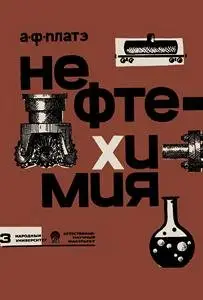
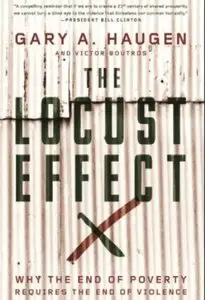

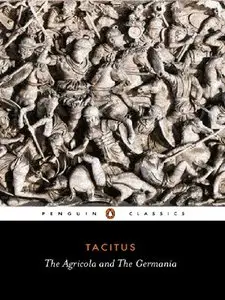
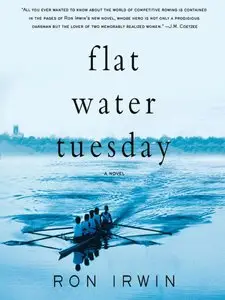
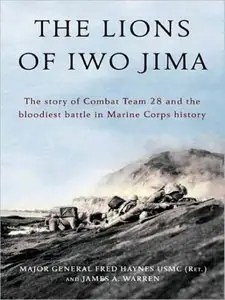
![Genius: The Life and Science of Richard Feynman [repost]](https://pixhost.icu/avaxhome/d0/88/002b88d0_medium.jpeg)
